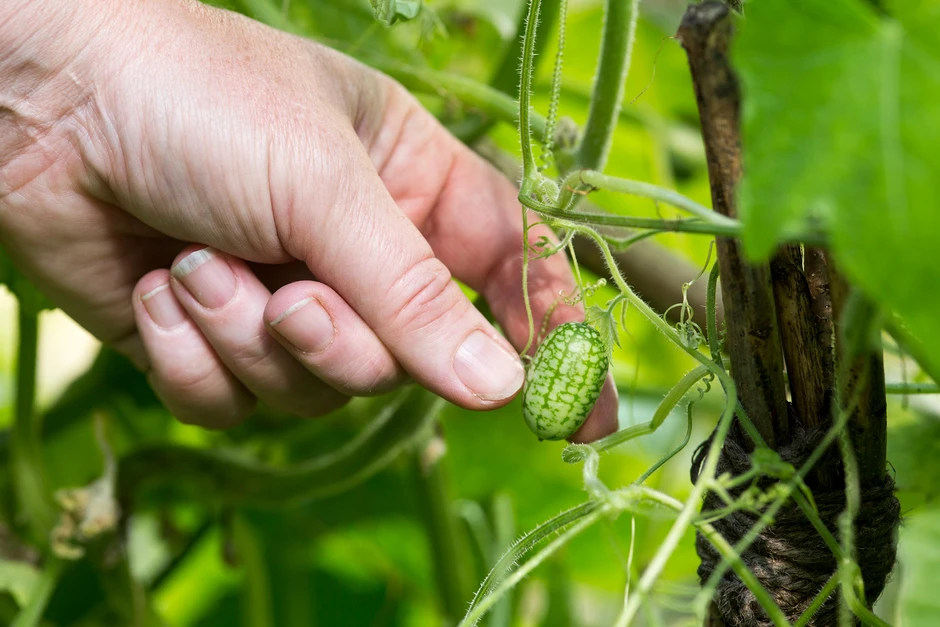How to grow cucamelons

Cucamelons (Melothria scabra) are a unique and fascinating fruit also known as Mexican sour gherkins or mouse melons. Despite their name, they’re not a cross between cucumbers and watermelon plants, but rather a distinct plant within the cucumber family. They are native to Mexico and Central America, where they’ve been cultivated for centuries.
Cucamelons are small, grape-sized fruits that resemble tiny watermelons and have a tart, citrusy flavour. They’re incredibly refreshing and can be eaten raw or used in a variety of culinary applications, such as pickling, salads and garnishes. Cucamelons are also rich in vitamins and minerals, making them a healthy addition to your diet.
While cucamelons may not be as commonly grown as other garden plants, they are gaining popularity among home gardeners for their distinctive taste and appearance. They’re easy to grow and require minimal maintenance.
Cucamelons are typically grown as annuals, but they can be grown as perennials in warmer climates (and can be overwintered indoors). They need warm temperatures and are sensitive to frost, so they should be planted out from May, after all risk of frost has passed. If grown in a greenhouse they can be started off earlier.
How to grow cucamelons
Grow cucamelons in moist, well-drained, fertile soil in full sun. Sow seed under cover from March and plant out after all risk of frost has passed. Water regularly and fertilise with a high-potash liquid feed every week or so once flowers start appearing. Harvest cucamelons when they are around the size of a large grape and still firm.
Where to grow cucamelons
Grow cucamelons indoors or outside, in containers or directly in the ground. They are climbers and so require support from a trellis or wigwam of canes.
How to plant cucamelons
Cucamelon seed needs a temperature of around 23ºC to germinate successfully, so sow seed in a heated propagator from early April if they are to be grown in a greenhouse, or from mid April to early May if they are to grow outside. Sow seeds into trays or modules of peat-free seed compost and cover with 7mm-1cm of compost. Firm gently and water with a watering can with the rose attached. As with other members of the cucumber family, it’s best to plant the seeds on their sides to reduce the risk of them rotting.
Once the seedlings have reached a height of about 6cm they can be transplanted from trays into individual 9cm pots containing peat-free multi-purpose compost, and grown on for a few weeks until they are large enough to be planted outside, after all risk of frost has passed. If you sowed cucamelon seed into modules you will need to move them into pots a little later, so the rootball stays intact.
Cucamelons are capable of thriving in all types of containers, and even growbags. Make sure pots are at least 30cm across and 30cm deep, and are positioned in a warm, sunny area.
Support the plants on a trellis or wigwam system as you would with cucumber plants. It may also be worth cutting back some of the floppy top growth just before planting; this will soon be replaced by vigorous new growth that is better equipped to grow into the supports. Place a short length of bamboo next to each one – this will help the plant to climb up into the supports. You may need to protect the young plants from slugs and snails.